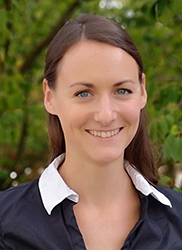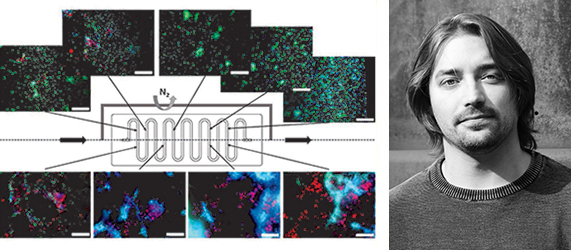Cultivation of micrarchaeota – an outline
The last few years have shown that representatives of the DPANN syperphylum are abundant and widely distributed. Bioinformatic data from various environmental samples allow us an insight into the fundamentals of their life. Nevertheless, laboratory cultivation of the DPANN and with that a way towards a deeper understanding of their physiology, ecological role and impact on other organisms turned out to be challenging.
Over several years we enriched a nanosized archaeon and its helper-organism from an acidic biofilm from the former pyrite mine “Drei Kronen und Ehrt” in the Harz Mountains in Germany. The nanosized archaeon belongs, within the DPANN superphylum, to the micrarchaeota, from which no reprensentative could be long-term cultivated to date. The second player in this stable co-culture is a new member within the Thermoplasmatales, showing a 91.7 % identity to Cuniculiplasma divulgatum as its most closely related organism. Metagenomic and metatranscriptomic data of the co-culture revealed a genome size for the micrarchaeota-related organism of 1 Mbp, twice as big as the genomes of other so far culturable nanosized archaea (Nanoarchaeum equitans or Nanopusillus acidilobi) and the lack of sugar metabolism and anabolism. Furthermore, CARD-FISH analyses as well as qPCR data indicate that the growth of A_DKE is dependent on the formation of cell aggregates, which might enable feeding of our nanosized archaeum by the new member within the Thermoplasmatales. Comparative bioinformatic analysis, imaging techniques, lipids analyses as well as metabolomic data are currently applied to reveal the basis and the mechanisms of the interaction within the co-culture.
Susanne Krause is a postdoctural scientist at the Institute of Applied Biosciences, Department of Applied Biology, Karlsruhe Institute of Technology, Germany
Advanced microbial cultivation – spatial separation of multispecies biofilms and robot-assisted analysis
Biofilms are the main lifestyle of microorganisms and over the last decades coming more and more into focus of scientific attention. Considering the formation of gradients, co-dependency interactions between different species and the resulting spatial distribution of microorganisms it is quite challenging to analyze multispecies biofilm-consortia. We have therefore developed a novel microfluidic-based chip-system for the formation and analysis of biofilms. The technology aims to divide naturally three-dimensional growing biofilms into a two-dimensional structure to thereby enable separate co-culturing of previously uncultivable bacteria or archaea. The system has a modular design with modifiable cultivation conditions and offers a broad range of appropriate analytical tools. This includes the capability of automated FISH-/CARD-FISH, spectroscopy and OCT analysis, an online sampling for spatiotemporal resolution imaging with micrometer precision as well as anaerobic cultivation with various gas mixtures.
With our system we are able to generate and monitor biologically and physically induced gradients and analyzed these via cultivation of different natural and synthetic mixed cultures. All leading to the desired effect of self-organized separation. With this technology we were able to describe for the first time a protective co-culture behavior between Leucobacter chromiiresistens and Escherichia coli. We could also prove this dependency via online monitoring 16SrRNA analysis coupled to downstream FISH evaluation.
Furthermore, we evolved the chip-platform from the enrichment- and separation-based usage to an application as screening platform. With that, we have started to search and optimize novel strains for biotechnological applications.
Tobias Kabbeck studied biology at the Karlsruhe Institute of Technology (KIT) with focus on applied microbiology from 2009 to 2015. In his bachelor thesis he investigated exoelectrogenic microorganisms in a microbial fuel cell, while in his master project he started working on the establishment of a novel microfluidic cultivation device. This continued with an PhD thesis going further into the topic of multispecies biofilm formation. During his PhD he worked together with his supervisor Prof Johannes Gescher and was part of the Biofilm Technologies team at the Institute for Biological Interfaces headed by Prof Christof Niemeyer.

